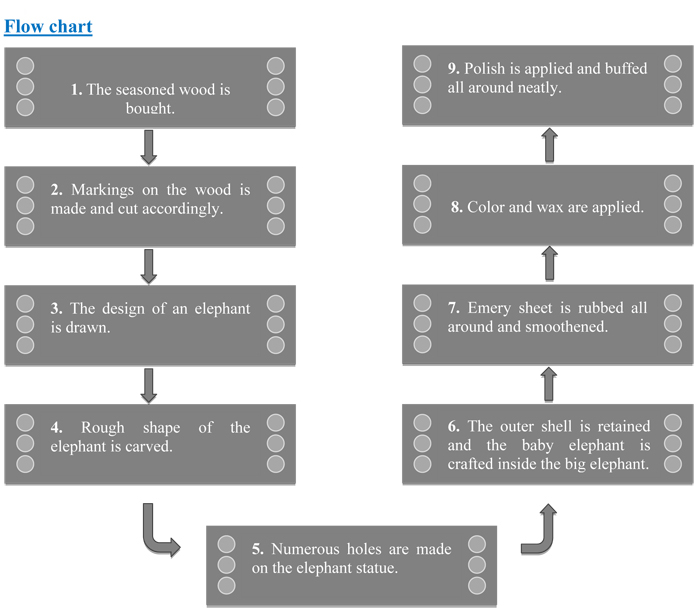Design Resource
Elephant Jali Work
Wood Carving
by
Prof. Bibhudutta Baral, Divyadarshan C. S. and Rakshitha
Elephant jali work is a hand carved delicate art. The other name for elephant jali work is ‘elephant undercut work’. Jali work was majorly done on stones in olden days but now-a-days jali works are done on wood as well.
The artist buys the seasoned wood of Neolamarckia cadamba, which is also called as Kadam wood in general. This wood is used for elephant undercut work, as it is available in local markets of Jaipur. The process of making elephant jali work begins by marking the measurements on the wood by using the marking tools and then it is cut by using the saw tool and sizing it accordance to their need. The jali artist draws the design of an elephant on the wood and chisels it to get the rough shape of an elephant. Later it is made numerous holes on the elephant figure by using the power tool with different micro drill bits at every step. These drill bits are swappable from the power tool. Initially spade bit is used to mark the exact location on the figure, where the hole has to be made. Later the centre punch drill bit is used to make the holes. Through these holes, the gouge drill bit is inserted to scrap out the wood and hollowed out from within, wherever the necessity is. The specialty of this elephant jali work is, the baby elephant is crafted inside the big elephant. The outer shell of the statue is retained the same and the detailed hand carved jali work is made. Then the design of the holes and the designs between the holes are finely made, using the micro circular saw bit. In the next level the rock cross drill bit is used for detailing the shape of the eyes and ears of the elephant. After shaping the detailed designs on the elephant jali, emery sheet (that is rolled and attached to the power tool) is rubbed all around the elephant idol. By this process the semi finishing is done.
In the next level the rectangular solid form of wax and clay mixture (batti) is rubbed to the buffing head of the buffing machine. And then the powdered color is dusted onto the elephant jali idol and the idol is buffed well all around through the help of buffing head. Later the polish is manually applied by the toothbrush on the elephant jali idol evenly and buffed again. So that the fine polishing is made/given for the idol and the elephant jali work is completed.


















